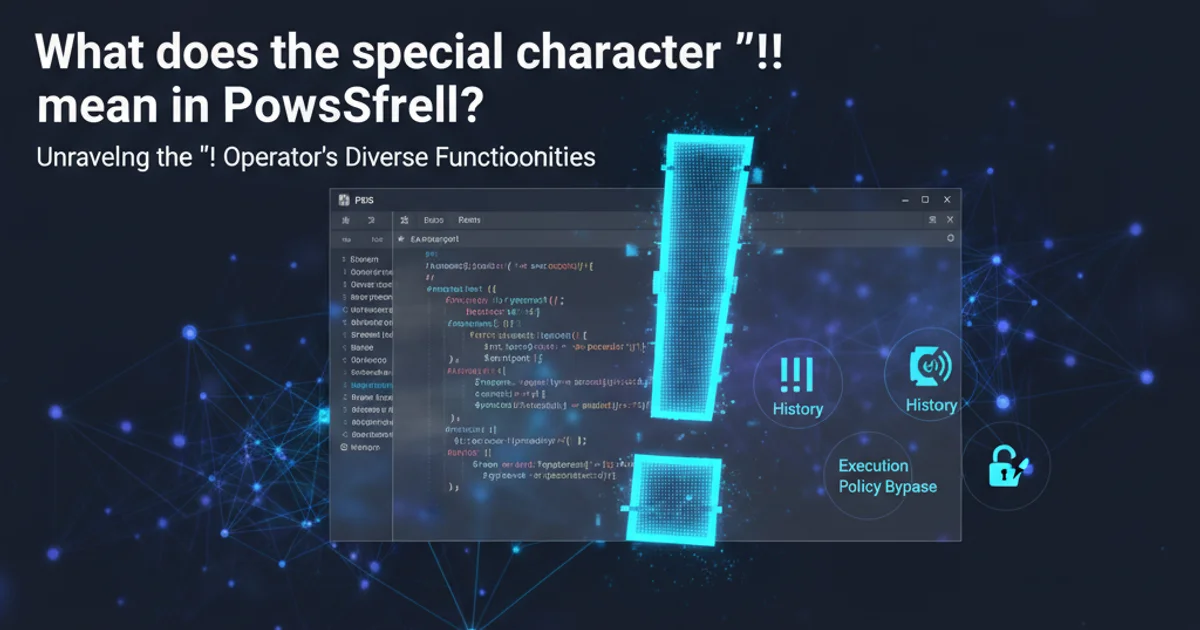Get coordinates from Hardware GPS
Categories:
Accessing GPS Coordinates Across Platforms

Learn how to retrieve real-time GPS coordinates from hardware on web (JavaScript), server-side (PHP), and mobile (Android) applications, covering common challenges and best practices.
Accessing a user's geographical location is a fundamental feature for many modern applications, from navigation and ride-sharing to location-based services and social media. This article provides a comprehensive guide on how to obtain GPS coordinates directly from hardware across various platforms: web browsers using JavaScript, server-side applications with PHP, and native Android applications. We'll cover the necessary APIs, permissions, and best practices to ensure accurate and privacy-conscious location data retrieval.
Web Browsers: Geolocation API (JavaScript)
Modern web browsers provide a built-in Geolocation API that allows web applications to access the user's location. This API is available through the navigator.geolocation object and supports both one-time location requests and continuous watching of position changes. It typically uses a combination of GPS, Wi-Fi, and cellular triangulation to determine the most accurate position. User consent is always required before location data can be accessed.
function getLocation() {
if (navigator.geolocation) {
navigator.geolocation.getCurrentPosition(showPosition, showError, { enableHighAccuracy: true, timeout: 5000, maximumAge: 0 });
} else {
alert("Geolocation is not supported by this browser.");
}
}
function showPosition(position) {
const latitude = position.coords.latitude;
const longitude = position.coords.longitude;
console.log(`Latitude: ${latitude}, Longitude: ${longitude}`);
// You can send these coordinates to your server or display them on a map
}
function showError(error) {
switch(error.code) {
case error.PERMISSION_DENIED:
console.error("User denied the request for Geolocation.");
break;
case error.POSITION_UNAVAILABLE:
console.error("Location information is unavailable.");
break;
case error.TIMEOUT:
console.error("The request to get user location timed out.");
break;
case error.UNKNOWN_ERROR:
console.error("An unknown error occurred.");
break;
}
}
// Call getLocation() to initiate the request
// getLocation();
JavaScript code to get current GPS position using the Geolocation API.
enableHighAccuracy option requests the most precise location available, but it can consume more battery and take longer.Android Applications: Location Services API
For native Android applications, Google Play Services provides a robust Location Services API, specifically the Fused Location Provider. This API intelligently combines signals from GPS, Wi-Fi, and cellular networks to provide optimal location accuracy and power consumption. Accessing location requires declaring appropriate permissions in AndroidManifest.xml and requesting them at runtime from the user.
sequenceDiagram
participant App as Android App
participant OS as Android OS
participant GPS as GPS Hardware
participant WiFi as Wi-Fi/Cellular
App->>OS: Request Location Permissions
OS-->>App: Permission Granted/Denied
alt Permission Granted
App->>OS: Request Location Updates (Fused Location Provider)
OS->>GPS: Get GPS Signal
OS->>WiFi: Get Wi-Fi/Cellular Data
OS-->>App: Location Data (Latitude, Longitude, Accuracy)
else Permission Denied
App->>App: Handle Permission Denied
endSequence diagram for obtaining location in an Android application.
AndroidManifest.xml
Kotlin (Activity/Fragment)
import android.Manifest import android.content.pm.PackageManager import android.os.Bundle import android.widget.Toast import androidx.appcompat.app.AppCompatActivity import androidx.core.app.ActivityCompat import com.google.android.gms.location.FusedLocationProviderClient import com.google.android.gms.location.LocationServices
class MainActivity : AppCompatActivity() {
private lateinit var fusedLocationClient: FusedLocationProviderClient
private val LOCATION_PERMISSION_REQUEST_CODE = 1001
override fun onCreate(savedInstanceState: Bundle?) {
super.onCreate(savedInstanceState)
setContentView(R.layout.activity_main)
fusedLocationClient = LocationServices.getFusedLocationProviderClient(this)
if (checkLocationPermissions()) {
getLastLocation()
} else {
requestLocationPermissions()
}
}
private fun checkLocationPermissions(): Boolean {
return ActivityCompat.checkSelfPermission(this,
Manifest.permission.ACCESS_FINE_LOCATION) == PackageManager.PERMISSION_GRANTED
}
private fun requestLocationPermissions() {
ActivityCompat.requestPermissions(
this,
arrayOf(Manifest.permission.ACCESS_FINE_LOCATION),
LOCATION_PERMISSION_REQUEST_CODE
)
}
override fun onRequestPermissionsResult(
requestCode: Int,
permissions: Array<out String>,
grantResults: IntArray
) {
super.onRequestPermissionsResult(requestCode, permissions, grantResults)
if (requestCode == LOCATION_PERMISSION_REQUEST_CODE) {
if (grantResults.isNotEmpty() && grantResults[0] == PackageManager.PERMISSION_GRANTED) {
getLastLocation()
} else {
Toast.makeText(this, "Location permission denied", Toast.LENGTH_SHORT).show()
}
}
}
private fun getLastLocation() {
if (ActivityCompat.checkSelfPermission(this,
Manifest.permission.ACCESS_FINE_LOCATION) != PackageManager.PERMISSION_GRANTED) {
return // Should not happen if checkLocationPermissions() is called first
}
fusedLocationClient.lastLocation
.addOnSuccessListener { location ->
if (location != null) {
val latitude = location.latitude
val longitude = location.longitude
Toast.makeText(this, "Lat: $latitude, Lng: $longitude", Toast.LENGTH_LONG).show()
// Use latitude and longitude here
} else {
Toast.makeText(this, "Location not found", Toast.LENGTH_SHORT).show()
}
}
.addOnFailureListener { e ->
Toast.makeText(this, "Error getting location: ${e.message}", Toast.LENGTH_SHORT).show()
}
}
}
Server-Side Applications: PHP (Indirect Access)
It's crucial to understand that PHP, being a server-side language, cannot directly access a user's hardware GPS. The GPS hardware resides on the client device (browser, mobile app), not on the server. Therefore, to get GPS coordinates in a PHP application, you must first obtain them on the client-side (e.g., using JavaScript in a web browser or native APIs in a mobile app) and then send them to your PHP server via an HTTP request (e.g., AJAX, form submission, API call). PHP then processes these coordinates as data received from the client.
// Example JavaScript on client-side to send coordinates to PHP server
function sendLocationToServer(latitude, longitude) {
const xhr = new XMLHttpRequest();
xhr.open('POST', 'save_location.php', true);
xhr.setRequestHeader('Content-Type', 'application/json');
xhr.onreadystatechange = function () {
if (xhr.readyState === 4 && xhr.status === 200) {
console.log('Location sent to server successfully:', xhr.responseText);
} else if (xhr.readyState === 4) {
console.error('Error sending location to server:', xhr.status, xhr.statusText);
}
};
const data = JSON.stringify({ latitude: latitude, longitude: longitude });
xhr.send(data);
}
// After getting location from navigator.geolocation.getCurrentPosition:
// sendLocationToServer(position.coords.latitude, position.coords.longitude);
Client-side JavaScript to send location data to a PHP backend.
<?php
header('Content-Type: application/json');
$input = file_get_contents('php://input');
$data = json_decode($input, true);
if (isset($data['latitude']) && isset($data['longitude'])) {
$latitude = $data['latitude'];
$longitude = $data['longitude'];
// Sanitize and validate input
if (is_numeric($latitude) && is_numeric($longitude)) {
// Here you would typically save to a database, log, or process the coordinates
// Example: echo "Received coordinates: Latitude=$latitude, Longitude=$longitude";
// For demonstration, just return them
echo json_encode(['status' => 'success', 'message' => 'Coordinates received', 'latitude' => $latitude, 'longitude' => $longitude]);
} else {
http_response_code(400);
echo json_encode(['status' => 'error', 'message' => 'Invalid coordinate format']);
}
} else {
http_response_code(400);
echo json_encode(['status' => 'error', 'message' => 'Latitude and longitude are required']);
}
?>
PHP script (save_location.php) to receive and process location data from the client.